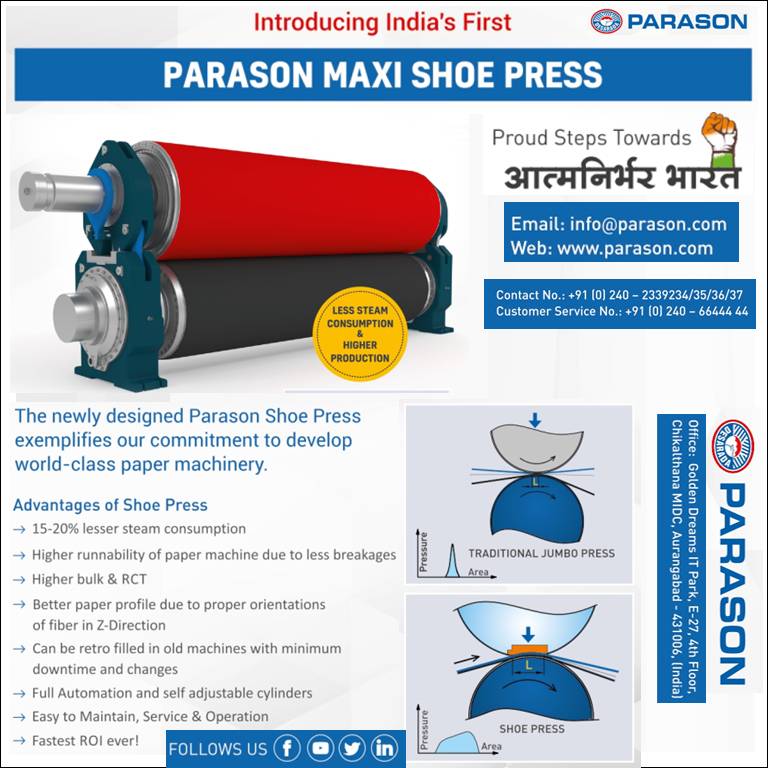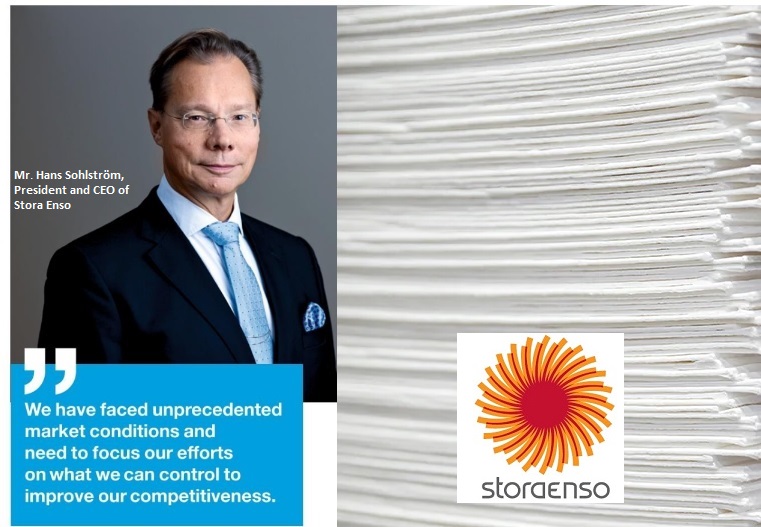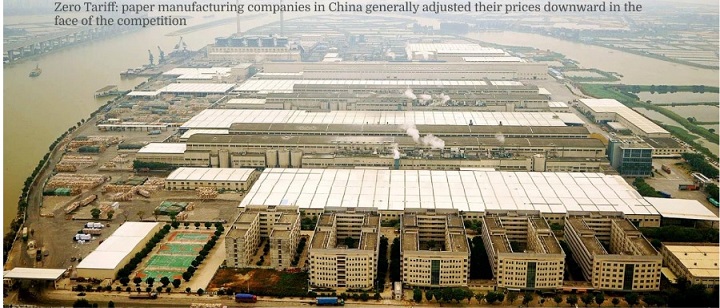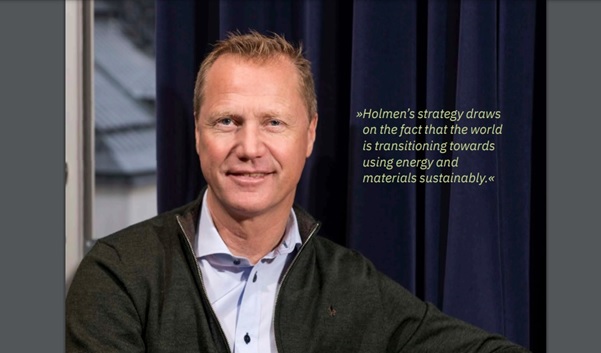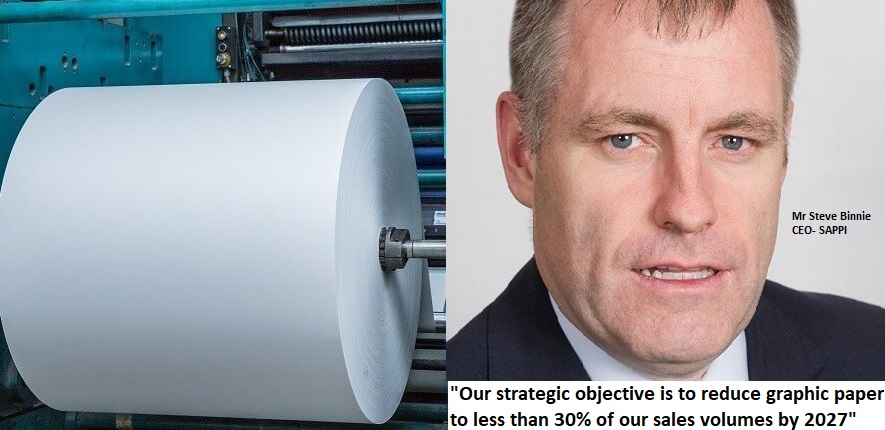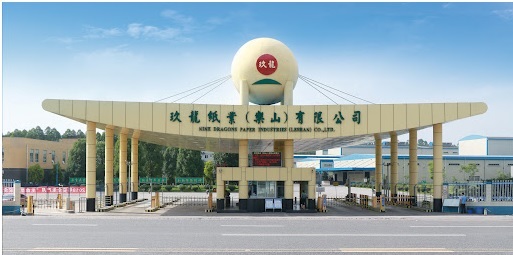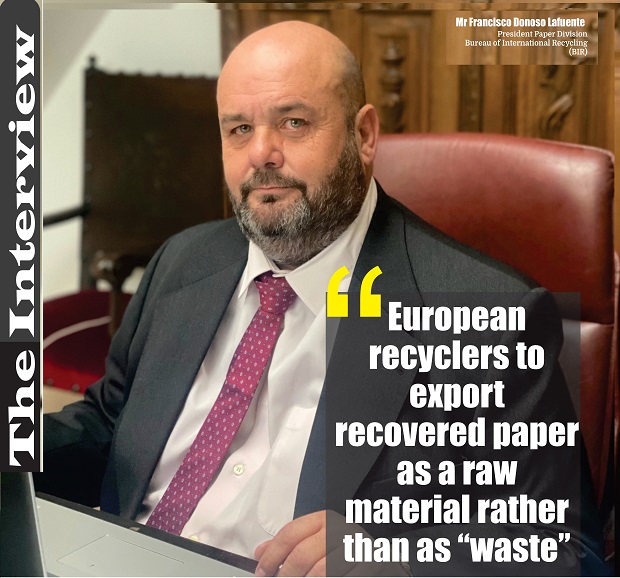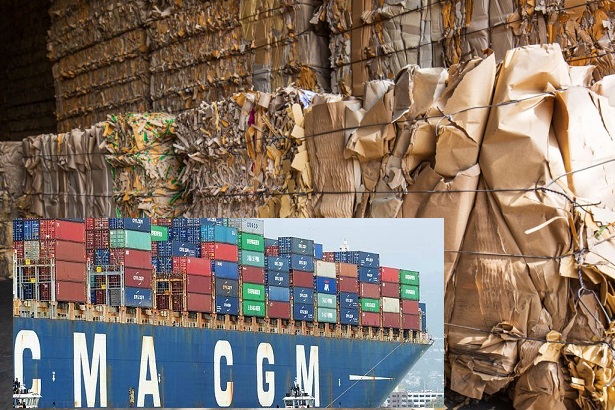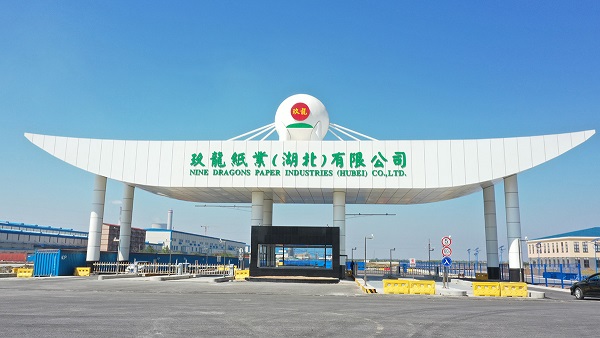Indian government will have to ensure that non-compliant pulp and paper (e.g. from Indonesia via China) does not undermine Indian GHG goals, says Ms. Nicole Rycroft, Founder & ED of Canopy
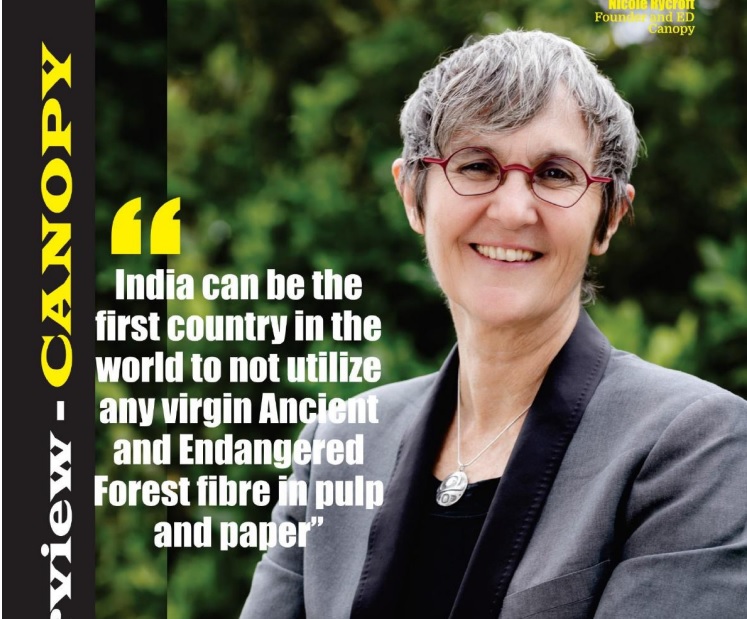
Indian government will have to ensure that non-compliant pulp and paper (e.g. from Indonesia via China) does not undermine Indian GHG goals, says Ms. Nicole Rycroft, Founder and Executive Director of Canopy
Key Highlights
“Canopy is willing to work closely with the Indian pulp and paper industry to test ideal product options and inform our brand partners of the recycled and ag-fibre product offerings coming from Indian suppliers”
“Some of the newest tech innovations claim to improve the quality output compared to common non-wood pulps”
“With 100 Million tonnes plus of feedstock residues, a history of experience, and emerging innovation, India has the potential to supply lower carbon paper and packaging to the world”
“India can be the first country in the world to not utilize any virgin Ancient and Endangered Forest fibre in pulp and paper”
Exclusive Insights: Ms. Nicole Rycroft, Founder and Executive Director of Canopy, explores the challenges and opportunities in the alternative fibers market in an interview with The Pulp and Paper Times. Ms. Rycroft sheds light on wood-based fibers, emerging ag-fiber technologies, the impact of the European Union Deforestation Regulation (EUDR), and her insights into safeguarding Ancient and Endangered Forests, species, and climate. Read the full interview for a comprehensive understanding of the evolving landscape.
Q: Please give a brief introduction to Canopy
Canopy is a global, solutions-driven not-for-profit organization dedicated to protecting the world’s Ancient and Endangered Forests, species, and climate.
We work collaboratively with over 950 brands, producers and innovators to transform unsustainable supply chains and scale the uptake of lower carbon, lower impact, and circular alternatives — what we call Next Gen Solutions. These solutions utilize what is normally considered waste, like agricultural residues that are burned, or waste textiles that are landfilled, to take the sourcing pressure off of forests.
We are working to catalyse 60 million tonnes of non-wood pulp capacity to eliminate the use of the world’s climate- and biodiversity-critical forests in the paper, packaging and viscose supply chains. We have a community of innovators, and are mobilizing climate financiers in an effort to stimulate the flow of the $78 billion USD in capital required for this transformational effort.
India has a once-in-a-generation opportunity to be the global leader in sustainable pulp, paper, and packaging production. India has over 100 million tonnes of agricultural fibre residues that could be turned into new products, helping provide farmer income, reducing air pollution, saving forests, and supporting an unprecedented economic opportunity for India’s pulp and paper industry.
Q: Please explain the working model of Canopy and how it is beneficial for end-use companies that use paper?
Canopy is a global leader in supporting the growth of alternative fibres in the pulp, paper, and Man-Made Cellulosic Fibre (MMCF) textile industries. Through our Pack4Good and CanopyStyle initiatives we help brands to use their standing in the value chain to incentivize their suppliers to provide recycled and/or ag-res fibre (also called ag-fibre) as alternatives to high carbon wood-based fibre for pulp, paper, and textiles. In doing so these brands can significantly lower their direct and indirect GHG output. Working with hundreds of companies in a pre-competitive way provides a larger and better developed market for producers ready to make the shift in their feedstock sourcing, or to expand production to supply a growing demand from the market for more sustainable options.
Q: What is your quick review about the current state of wood-based paper around the world
At a global level, primary forests are disappearing at an alarming rate due to sanctioned overuse, illegal logging, drought, and fires. Regulations such as the European Union Deforestation Regulation (EUDR) restricting imports of products originating from deforested or degraded forests, and carbon disclosure requirements are constraining the volume of compliant wood products. These type of regulations are likely to proliferate in the coming months (e.g. in New York State and California). This could create upward pressures on the price of wood (lower volumes compliant wood but consistent or rising demand). India’s pulp/paper producers should look at the expanding opportunities to build export markets for ag-fibre and ag-fibre blended paper and packaging that is clearly compliant with the EUDR. To ensure that Indian paper can sell into the EU and other deforestation/degradation restrictive markets, the Indian government will have to ensure that non-compliant pulp and paper (e.g. from Indonesia via China) does not undermine Indian GHG goals or interfere with export opportunities.
Q: After Wood, the most used raw material for paper making is recycled paper, but don’t you think that increasing capacities for packaging paper production has making it difficult to procure the waste paper for paper mills? Every mill need waste paper at any cost.
There is more recycled fibre produced annually for paper (about 54% of total) than virgin tree pulp. Lack of waste recovery infrastructure and systems in many jurisdictions means a lot of paper is not currently being recycled that should be. India has increased its use of recycled paper from 5 million Tonnes in 2018 to over 16 million tonnes in 2023, according to FisherSolve International. Global pricing fluctuates at different times due to basic supply/demand dynamics. While we are not economists, we believe the longer-term trend is towards higher feedstock prices for wood which will make waste recovery increasingly more economical. Looking at alternative fibre feedstock is an intelligent strategy to help mitigate existing feedstock risks.
Q: Long fibre comes from wood base paper which enables waste paper to be recycled many times. How would we obtain long fibre if it is removed (wood) from supply chain? Don’t you think that paper made from agro waste has such kind of long fibre?
Canopy recommends that India’s pulp and paper industry invest in research and development to improve ag-fibre pulping technology, build new feedstock supply chains that are not forest-based, and to develop ideal blends for high-volume paper types (e.g. packaging and tissue). Ag-fibres come in a variety of lengths: industrial hemp offers a long fibre feedstock which can replace virgin softwood, but requires a strategy to expand the volume grown. Wheat straw pulp can be used effectively as a hardwood replacement in paper, packaging, and tissue, and rice-paddy straw is a low-cost feedstock excellent for molded fibre. Canopy is willing to work closely with the Indian pulp and paper industry to test ideal product options and inform our brand partners of the recycled and ag-fibre product offerings coming from Indian suppliers.
While we are focused on pulp for paper in this discussion, Canopy is also working with brands, producers, and tech innovators to scale up use of cotton textile waste as the cellulose input for dissolving pulp/Man Made Cellulosic Fibre.
Q: Are there already available technologies for producing paper from other forms of flora, and plants other than trees, such as shrubs, grasses, perennials, fallen leaves, straw, waste from crop production and/or lumber waste?
There have been recent water and chemical efficiency improvements for the most common ag-fibre pulping processes (soda and soda AQ) as well as several new technologies, developed by innovator ventures and by existing players in the field such as Andritz, Sim-Agro, Parason, and others. There is currently tremendous innovation taking place from technology companies that are developing processes that use less energy and water, and fewer chemicals. The good news is that all plant material contains cellulose and as such offers opportunities for creating pulp, paper, and packaging. There are a number of novel technologies from innovators in India, EU and North America that are being tested in commercial pilots now and in China at full commercial scale to pulp different types of plants, from wheat straw to reed to fallen leaves. Which tech to move forward with will be the choice of ventures, what feedstock is most available in the area they want to build or retrofit a mill and weighing the risk and benefits of new technologies that are less proven but may offer lower CAPEX, OPEX or better performance qualities.
Q: Canopy has played pivotal roles in securing large-scale conservation gains in 39 million acres of Ancient and Endangered Forests in different countries. But in most of countries like in India, No paper mill is allowed to cut down tree or to take single KG of wood from government forest or public forest. Paper mills have grown forest through agroforestry benefiting farmers and the environment. Every year thousands of hectares of barren land come under agro-forestry. What do you think about the agroforestry?
Responsible agro-forestry can offer valuable capacity additions to India’s pulp and paper industry and can provide alternative income sources for farmers. The key is to ensure primary forest is not impacted and the tree species selected are low water use. In many countries primary forest is being cleared for eucalyptus plantations creating forest and biodiversity loss and well as impacting local indigenous populations. This type of plantation or agro-forestry is not supported by Canopy. India’s agroforestry industry, if responsibly managed to maintain or improve ground water and soil carbon, could supplant 10 – 15 million tonnes of pulp currently being supplied from unsustainable plantations and primary forests in other parts of the world.
Q: Alternative fibre papers are actually in most cases a combination of pulp from wood or from paper for recycling blended with alternative fibres. At present, a higher proportion of alternative fibre content (more than 20%) may mean a reduction in quality. How Canopy satisfy its client base about the quality of paper made from alternative fibre.
Canopy has been working with the SAFI Consortium at North Carolina State University, with testing laboratories, and on pilots which examine ideal fibre blends for a variety of paper and packaging options. Our goal is to work with researchers and industry to develop guidelines which help customers make product choices that are the lowest carbon and that meet the required specifications for quality and performance. Some of the newest tech innovations claim to improve the quality output compared to common non-wood pulps. This is exactly why R&D investments to trial and scale these innovations is important.
Q: Fisher International shows that non-wood pulps represent only 5 per cent of global pulp production, with modest growth over the next four years. What are the methods where we can increase the non wood pulp sources for paper making?
As stated earlier in the interview, we believe India has a generational opportunity to become a global leader in agricultural fibre-based pulp, paper and packaging. With 100 Million tonnes plus of feedstock residues, a history of experience, and emerging innovation, India has the potential to supply lower carbon paper and packaging to the world. There is definitely work to be done to create the conditions for this success, and Canopy is working hard to help create these conditions by:
• Supporting innovators who are developing new pulping tech and end products that utilize alternative fibres.
• Working with organizations such as the Indian Impact Investors Council to introduce venture capital investors to emerging businesses in this space.
• Engaging Development Finance Institutions (DFIs) to look at allocating capital to new pulp and paper infrastructure in India.
• Supporting research to validate ideal paper/packaging fibre blends for high volume applications.
• Building brand demand through corporate policies to eliminate Ancient and Endangered Forests from their supply chains and encouraging offtake strategies.
• Working with industry, associations and government to examine government policies and standards to support development of a low carbon pulp and paper industry .
• Conducting analyses to identify regions of high volume ag-fibre feedstock adjacent to conventional mills that could add a non-wood pulp line or transition a portion of their production to ag-fibre.
Q: There have been more stories about the ‘Greenwashing’ is misleading. It's not telling the whole truth and so the majority of the consumers don't understand all the science and technology in the packaging so they are led by these people that are greenwashing. Don’t you think companies are nowadays doing Greenwashing on account of using environment-friendly material in packaging?
I am not quite clear on the question. Indeed consumers are now wary that brands may be over-stating the environmental credentials of their products. Several legal cases in Europe and Canada have highlighted the need for claims to be both substantial and substantiated.
Q: The plastic industry has been striving to save its existence and as a result, many kinds of research have been conducted to make minimum use of plastic in food packaging. In one research in which three layers of recycled plastic are blown up with one layer of virgin grade plastic where the virgin layer is placed towards the food contact side, Is it a successful research? if this research is successful then 100% paper-based packaging with biodegradable coating has to wait a long time to get the plastic packing replaced as primary packaging for food products. How does Canopy assess this research and its outcomes?
Canopy does not do research on plastics. We are also not advocating for more paper to be used in packaging but rather for the fibre content of the current volume of paper on market to shift such that recycled content increases, ag-fibre content increases and virgin tree content decreases.
Q: Any message for the Paper Industry
We believe that India can scale ten Million+ tonnes of agricultural fibre pulp and paper capacity over the next ten years. We also believe that India can be the first country in the world to not utilize any virgin Ancient and Endangered Forest fibre in pulp and paper. Given the existing use of recycled fibre, agro-forest fibre and ag-fibre in the country, only a small amount of virgin Ancient and Endangered Forest fibre needs to be removed from current feedstock supply coming into the country. We encourage the Indian Pulp and Paper Industry to invest boldly in ag-fibre capacity and to work with Canopy to address any significant barriers and challenges for market growth and acceptance. We are committed to work in collaboration with the industry and truly believe that the scale up of Next Gen fibres to replace forest fibre from high carbon forest sources is a win-win for business and the environment.
Web Title: Indian government will have to ensure that non-compliant pulp and paper (e.g. from Indonesia via China) does not undermine Indian GHG goals, says Ms. Nicole Rycroft, Founder and Executive Director of Canopy




 Join WhatsApp Group
Join WhatsApp Group Join Telegram Channel
Join Telegram Channel Join YouTube Channel
Join YouTube Channel Join Job Channel (View | Submit Jobs)
Join Job Channel (View | Submit Jobs)




